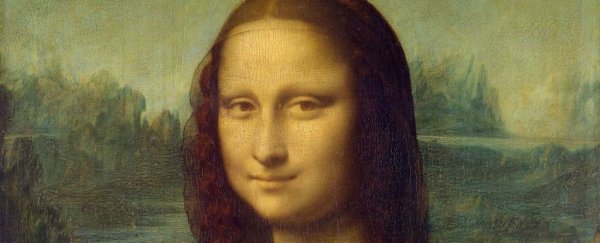Bone fragments dating back to the 16th century are "very likely" to be that of the actual Mona Lisa, say Italian researchers.
According to renowned art sleuth Silvano Vinceti, who has for years led the search to find the owner of the world's most enigmatic smile, human remains uncovered in a Florence convent have a very high likelihood of belonging to Lisa Gherardini – whom many historians believe was the real-life model posing for Leonardo Da Vinci's most famous artwork.
Gherardini, the wife of silk merchant Francesco del Giocondo, is thought to have posed for Da Vinci's painting as a young woman, before her death in 1542. She is said to have spent her final days at the Sant'Orsola convent in Florence, from which archaeologists exhumed skeletal remains in 2012.
Their goal was to use carbon dating and DNA testing to establish a link to Gherardini's children's remains, separately exhumed from their resting place at the Giocondo family crypt in the city's Santissima Annunziata basilica.
"There are converging elements, above and beyond the results of the carbon–14 tests, that say we may well have found Lisa's grave," Vinceti told reporters at an announcement of the results. "We can't provide absolute certainty that some of the remains examined are Lisa's, but the likelihood is very high."
However, the researchers stopped short of announcing that the mystery was completely solved, as the state of the children's remains was too degraded due to flooding over the centuries to allow DNA comparison with the bones found in Gherardini's resting place.
"Our biggest problem has been the fact that the fragments were very fragmented, very deteriorated," said Giorgio Gruppioni, head of the forensic anthropology laboratory at Bologna University.
It was also anticipated that the researchers would find Gherardini's skull in the convent remains, which would have enabled scientists to create a facial reconstruction, which, even in the absence of more authoritative DNA testing, could have shown a likeness to the figure in the world's most celebrated painting. Unfortunately, no skull was found in the convent tomb, and in the absence of any other known descendants of Gherardini, DNA testing is impossible.
Vinceti, who heads Italy's National Committee for the Promotion of Historic and Cultural Heritage, promised years ago that by finding Gherardini's skull he would solve the mystery of Mona Lisa's true identity once and for all.
While that grand claim remains far from scientifically proven, the art detective – who in the past has been criticised by some for his methods – seems happy enough to close the investigation for now. That is, until future technology enables a more thorough analysis of the available evidence.
"If you were to ask me what I personally, subjectively, think and feel, I'd say I believe that we have found her," he said. "I have done my best because I believe in this and the results for me are most satisfying."
